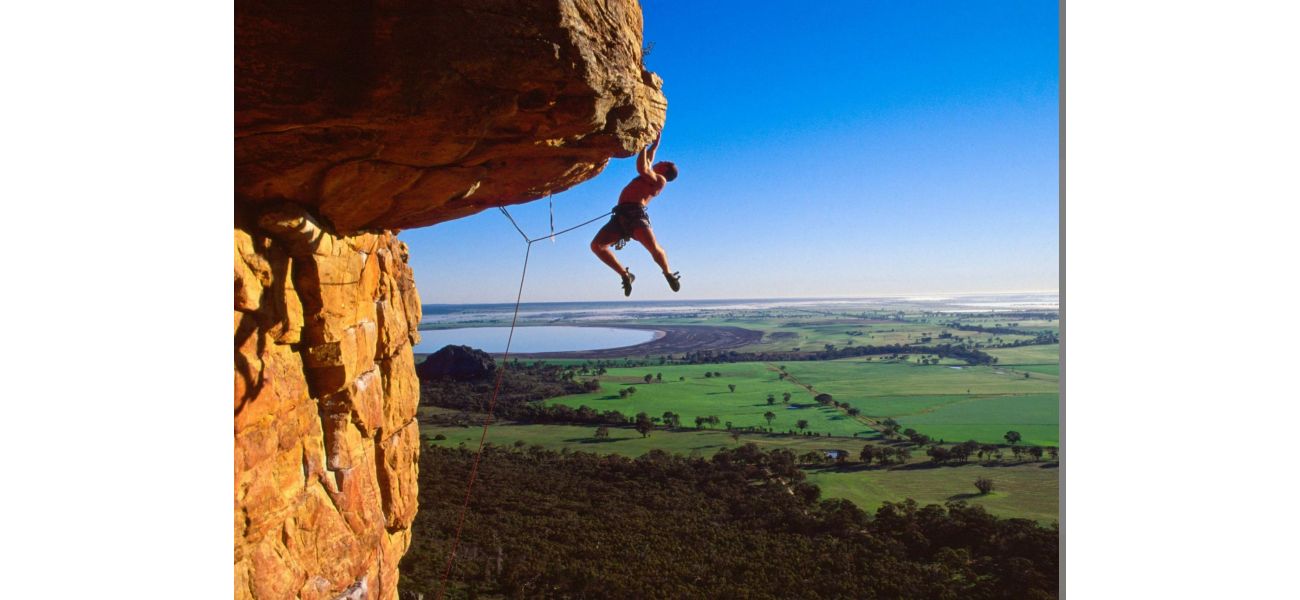State government prohibits access to some sections of popular rock-climbing destination.
Half of Mount Arapiles' tracks in western Victoria will be restricted due to proposed changes.
November 6th 2024.

Australia's beloved rock-climbing spot, Mount Arapiles, is facing closure after an investigation into its cultural heritage. This decision could potentially close off up to half of the tracks surrounding the mountain, as proposed in the Dyurrite Cultural Landscape draft management plan. Located in western Victoria, this area boasts one of the largest stone quarry complexes in the country, with evidence of rock art and scar trees dating back thousands of years.
It's a site that holds great significance for the Traditional Owners, represented by the Barengi Gadjin Land Council, as well as for all users of the state park. The state government has stated that the updated management plan will provide certainty for these groups, while also respecting the cultural heritage of the area and allowing Victorians to continue visiting and enjoying the outdoors in the Dyurrite Cultural Landscape. This sentiment was echoed by Minister for Treaty and First Peoples, Natalie Hutchins, who emphasized the importance of finding a balance in this decision.
However, the draft management plan does allow for 80 established rock-climbing areas to remain open for climbers. This means that some bans imposed in 2020, including those on Declaration Crag, Tiger Wall, and Castle Crag, will remain in place. Additionally, new areas such as The Pharos, Yesterday Gully, Mitre Rock, and Tiptoe Ridge will be permanently banned. This has caused outcry from the climbing community, who feel that their voices were not heard in the decision-making process.
The group Save Grampians Climbing has spoken out against the move, stating that it will have a devastating impact on the climbing community and accusing Parks Victoria and the Victorian Government of disregarding the majority of users in their consultation process. Despite this backlash, the public consultation on the draft management plan will remain open until December 2, giving concerned individuals and groups the opportunity to voice their opinions and potentially influence the final decision. It is a delicate situation, but one that highlights the importance of preserving cultural heritage while also considering the needs and desires of various groups who utilize the land.
It's a site that holds great significance for the Traditional Owners, represented by the Barengi Gadjin Land Council, as well as for all users of the state park. The state government has stated that the updated management plan will provide certainty for these groups, while also respecting the cultural heritage of the area and allowing Victorians to continue visiting and enjoying the outdoors in the Dyurrite Cultural Landscape. This sentiment was echoed by Minister for Treaty and First Peoples, Natalie Hutchins, who emphasized the importance of finding a balance in this decision.
However, the draft management plan does allow for 80 established rock-climbing areas to remain open for climbers. This means that some bans imposed in 2020, including those on Declaration Crag, Tiger Wall, and Castle Crag, will remain in place. Additionally, new areas such as The Pharos, Yesterday Gully, Mitre Rock, and Tiptoe Ridge will be permanently banned. This has caused outcry from the climbing community, who feel that their voices were not heard in the decision-making process.
The group Save Grampians Climbing has spoken out against the move, stating that it will have a devastating impact on the climbing community and accusing Parks Victoria and the Victorian Government of disregarding the majority of users in their consultation process. Despite this backlash, the public consultation on the draft management plan will remain open until December 2, giving concerned individuals and groups the opportunity to voice their opinions and potentially influence the final decision. It is a delicate situation, but one that highlights the importance of preserving cultural heritage while also considering the needs and desires of various groups who utilize the land.
[This article has been trending online recently and has been generated with AI. Your feed is customized.]
[Generative AI is experimental.]
0
0
Submit Comment





